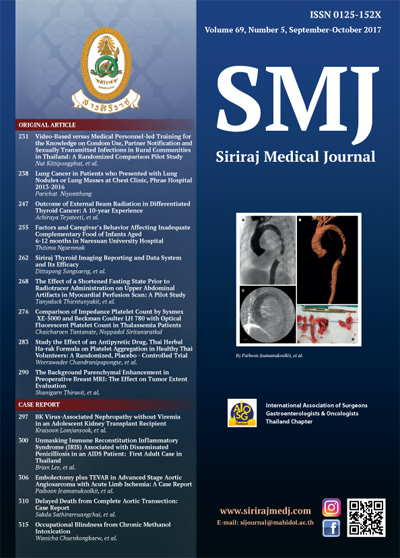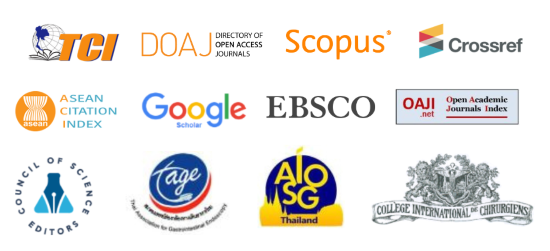Outcome of External Beam Radiation in Differentiated Thyroid Cancer: A 10-year Experience
Keywords:
External beam radiation, radiotherapy, differentiated thyroid cancerAbstract
Objective: Role of external beam radiation (EBRT) in differentiated thyroid cancer (DTC) is controversial. Outcomes of EBRT are also not uniform among studies due to variation in practices. Therefore, this study was elicited to evaluate the outcome of EBRT in DTC in context of our institutional practice.
Methods: Medical records of DTC patients who received EBRT to neck with or without mediastinum from January 2004 to December 2013 were retrospectively reviewed. All patients underwent total thyroidectomy (TT) or completion of thyroidectomy. EBRT could be given immediate after TT as adjuvant treatment or given at time of recurrence or RAI refractory as salvage treatment. Radioactive iodine (RAI) treatment could be given before or after EBRT or even be omitted. The primary end-points were locoregional failure-free survival (LRFS) and overall survival (OS).
Results: Among 47 patients, most of them were female (70%), age 45 years or over (83%), papillary thyroid cancer (75%) and stage III-IV (62%). There were adjuvant EBRT in 8 patients and salvage EBRT in 39 patients. At time of EBRT, there were high risk histology, gross residual tumor, positive surgical margin, lymph node metastasis, distant
metastasis and RAI refractory in 21%, 62%, 72%, 66%, 47% and 59% of patients, respectively. Radiation techniques were conventional radiotherapy, three-dimensional conformal radiotherapy (3D-CRT) and intensity modulated radiotherapy (IMRT) in 14, 19 and 14 patients with median EBRT dose of 50, 60 and 66 Gy (30-70 Gy), respectively.
At median follow-up time of 26.6 months (1-82), LRFS at 2 and 4 year were 74% and 63%, respectively. The 2- and 4-year OS were 62% and 42%, respectively. On multivariate analysis, age ≥ 45 years tended to associate with worse OS (p=0.058). EBRT dose ≤ 50 Gy also had a trend to be related with both worse LRFS (p=0.069) and OS (p=0.079).
Conclusion: EBRT might be given either as adjuvant or salvage treatment, particularly in case of gross residual tumor and RAI refractory. Escalation of EBRT dose to over 50 Gy with advanced EBRT technique such as IMRT might improve the LRFS and OS.
Downloads
Published
How to Cite
Issue
Section
License
Users are free to share, copy, and redistribute all articles published in the Siriraj Medical Journal (SMJ) in any medium or format as long as you follow the following terms:
- Attribution — You must give appropriate credit, provide a link to the material, and indicate if changes were made. You may do so in any reasonable manner, but not in any way that suggests the publisher endorses you or your use.
- NonCommercial — You may not use the material for commercial purposes.
- NoDerivatives — If you remix, transform, or build upon the material, you may not distribute the modified material.
- No additional restrictions — You may not apply legal terms or technological measures that legally restrict others from doing anything the license permits.







